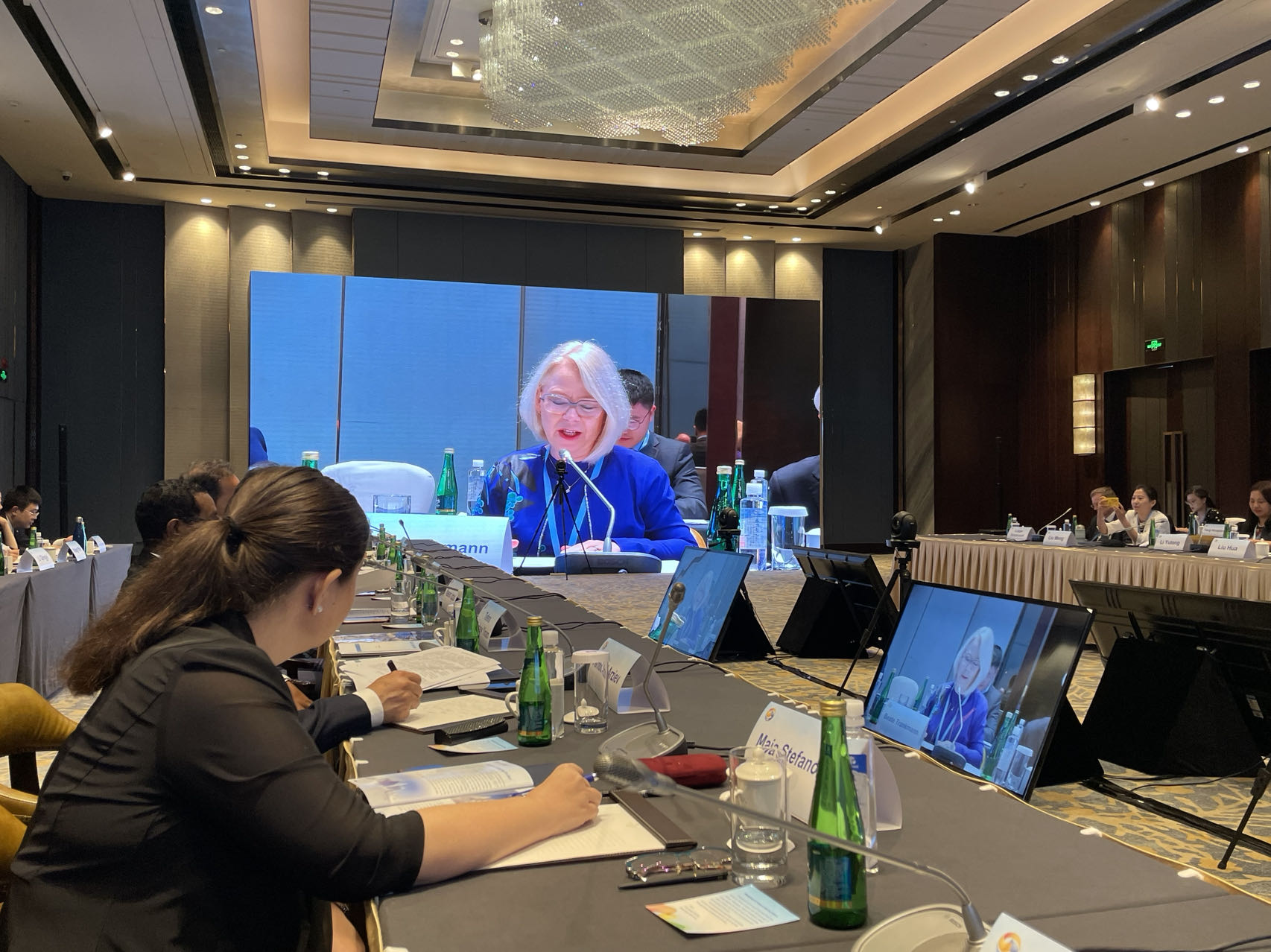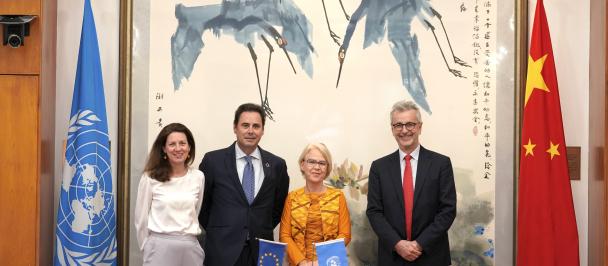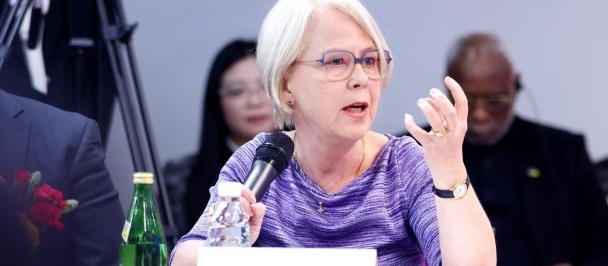Remarks by Ms Beate Trankmann at the Symposium on High-quality Belt and Road Cooperation
July 14, 2023

UNDP Resident Representative in China Beate Trankmann speaks at the Symposium on High-quality Belt and Road Cooperation in Harbin, China
Excellency Vice Minister Sun Weidong,
Distinguished participants, excellencies, ladies and gentlemen,
On behalf of the United Nations Development Programme, I am honored to join you for today’s discussion in beautiful Harbin.
Global challenges demand global action. It was under this principle that the Sustainable Development Goals were adopted in 2015 as a roadmap to ensure a sustainable future for both people and planet by 2030.
Unfortunately, at the mid-point, only 12% of SDG targets are on track, and progress on around 30% of targets has stalled or even regressed.
In particular, on the climate crisis, time is running out. Temperature are projected to exceed the Paris Agreement’s target of 1.5 degrees of warming by almost double within the century.
To combat this existential threat, we must radically change how we produce, consume, and invest across all sectors, and all of society. This will require comprehensive planning, budgeting, and financing strategies, which enable us to rapidly decarbonize our economies while ensuring that no one is left behind.
China, as the world’s second-largest economy, plays a crucial role. Its commitment to peak emissions before 2030 and achieve carbon neutrality before 2060 has instilled important momentum to global efforts towards a green future. Since announcing this goal in 2020, China has put in place the foundation of a low-carbon transition architecture under the "1+N" policy system releasing over 60 policy documents.
Similarly, China’s announcement to support green development in developing economies and stop new coal investments in its international cooperation engagement is critical to advance the transition in partner countries.
This is currently work in progress. 63 percent of Chinese BRI overseas energy engagement were in fossil fuels - despite a marked rise in China’s international green energy investments, up 50 percent in 2022 from 2021.[1]
China’s capacity and experience in renewable energy deployment can play an important role in accelerating the implementation of the 2030 Agenda for Sustainable Development and the Paris Climate Agreement at global level.
It leads in many of the critical technologies central to the low carbon transition – such as long-distance energy transmission, storage and battery technologies, and e-mobility.
Allow me to highlight two areas where I see opportunities for UNDP and China to work together on low-carbon development:
First, bringing clean energy to marginalized people, thereby reducing carbon footprints and eradicating poverty. With 675 million people still without electricity in 2021, UNDP is providing comprehensive energy solutions, through renewable energy mini grids to enhance resilience and prosperity in regions lacking electricity access, with a focus on Africa.
Second, supporting countries to reach their climate goals by turning their Nationally Determined Contributions into concrete actions. Through our Climate Promise to over 120 countries UNDP is helping to implement climate pledges via sovereign investment plans to reduce emissions.
To meet international climate and energy goals we need up to 1.7 trillion dollars of annual investment in renewable electricity generation and related infrastructure by 2030.[2]
With 489 billion dollars in value at the end of 2022, China has the biggest green bond market in the world and can significantly help to meet this target.
To direct corporate investments in the Chinese bond market towards the SDGs and help businesses and investors embed sustainability into their practices, we have worked with partners in China to adjust our global SDG Impact Standards and SDG Finance Taxonomy to country context.
These standards were put into practice by New Development Bank - issuing a 5 billion RMB SDG bond in the China Interbank market last year to support a green recovery from COVID.
We have also released SDG Investor Maps for the renewable energy sector and the circular economy in China to identify investment opportunities that generate both economic and SDG impact.
The SDGs were envisioned as a global pursuit. It is clear that no country can achieve them alone.
This is where initiatives, like China’s BRI and GDI, when fully aligned with the SDGs, can make a contribution by bringing interested UN Member States together to find new ways to advance the 2030 Agenda.
At UNDP, we stand ready to leverage our global network and expertise, and offer technical advice and best practices to support the achievement of the SDGs around the world.
With only seven years remaining to achieve the 2030 Agenda, our actions today will determine the future of people and the planet. Together, we can put the SDGs back on track, and build a greener, more sustainable world for everyone, everywhere.
[1] FISF of Fudan University, China BRI Investment Report 2022, https://greenfdc.org/wp-content/uploads/2023/02/Nedopil-2023_China-Belt-and-Road-Initiative-BRI-Investment-Report-2022.pdf

 Locations
Locations



